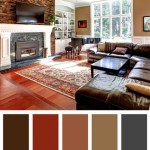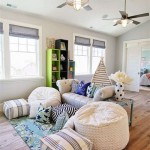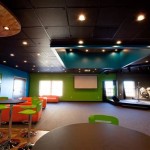How To Decorate a Rectangular Living Room With a Fireplace in the Middle
Decorating a rectangular living room with a centrally located fireplace presents both challenges and opportunities. The elongated shape can sometimes feel awkward or unbalanced, while the fireplace, though a natural focal point, can inadvertently divide the space. Successful design strategies aim to mitigate these issues by creating zones, balancing the visual weight, and maximizing functionality without compromising aesthetic appeal. This article will provide a detailed guide on how to effectively decorate such a space, enabling a harmonious and inviting living environment.
Defining Zones and Functionality
The first step in decorating a rectangular living room with a centrally located fireplace is defining specific zones within the space. This involves identifying the primary activities intended for the room and then allocating specific areas accordingly. Common zones include a seating area for conversation and relaxation, a media zone for entertainment, and potentially a reading nook or home office segment, depending on the room's dimensions and the homeowner's needs.
Consider the natural flow of traffic when establishing these zones. The main thoroughfare should not bisect the primary seating area, as this disrupts conversation and creates an uncomfortable feeling. Instead, aim to create pathways along the perimeter of the room, allowing for easy movement between zones without interfering with the functional areas. The fireplace itself can act as a natural divider, subtly separating two distinct zones. For example, the area directly facing the fireplace could be designated as the primary seating area, while the space behind it may function as a reading nook or a secondary conversation space.
Furniture placement is paramount in defining zones. Area rugs can visually delineate each space, providing a sense of boundaries and grounding the furniture within each zone. For instance, a large area rug under the primary seating arrangement will create a cohesive and defined conversation area. Similarly, a smaller rug beneath a reading chair and side table will visually separate the reading nook from the rest of the room. Lighting also plays a crucial role. Task lighting, such as a floor lamp or table lamp, can further enhance the functionality of specific zones, while ambient lighting can create a welcoming and unified atmosphere throughout the entire room.
Think about the view from each zone. The main seating area should ideally have a clear view of the fireplace and, if possible, any external views. The media zone should be positioned to minimize glare on the television screen. The reading nook should be located in a quieter area of the room, away from heavy foot traffic. By carefully considering these factors, it is possible to create a functional and well-defined space that caters to the specific needs of the occupants.
Balancing the Visual Weight
A fireplace placed in the middle of a rectangular living room can often create a visual imbalance, especially if it is a large or imposing structure. Careful attention must be paid to balancing the visual weight on either side of the fireplace to create a sense of harmony and equilibrium. This involves strategically placing furniture, artwork, and accessories to counteract the fireplace's dominance and create a cohesive aesthetic.
One effective strategy is to use symmetry. Place identical or similar pieces of furniture on either side of the fireplace to create a sense of balance. This could include matching armchairs, side tables, or lamps. Symmetry provides a grounding effect and helps to anchor the fireplace within the overall design. However, strict symmetry can sometimes feel too formal or clinical. Therefore, consider introducing subtle variations to add visual interest and prevent the space from feeling static.
Asymmetry can also be used effectively to balance the visual weight. This involves placing furniture and accessories of different sizes and shapes on either side of the fireplace, but in a way that still creates a sense of equilibrium. For example, a large sectional sofa on one side of the fireplace could be balanced by a pair of armchairs and a floor lamp on the opposite side. The key is to consider the overall visual impact and ensure that neither side feels significantly heavier than the other.
Artwork and accessories play a vital role in balancing the visual weight. A large piece of artwork above the fireplace can draw the eye upwards and create a focal point. Smaller pieces of artwork can be strategically placed on the walls and shelves to add visual interest and balance the overall composition. Pay attention to the colors and textures of the artwork and accessories, as these elements can also contribute to the overall balance of the room. Bright colors and bold patterns tend to draw the eye, while muted colors and subtle textures create a more calming effect.
Consider the height of the furniture and accessories. Tall bookshelves or cabinets can help to balance the vertical space and prevent the room from feeling too low or cramped. Low-slung furniture, on the other hand, can create a more relaxed and informal atmosphere. By carefully considering the height of the various elements in the room, it is possible to create a visually balanced and harmonious space.
The fireplace itself can be further enhanced to better integrate with the room's design. Painting the fireplace surround, adding decorative tiles, or installing a mantel can personalize the features and tie to specific decor themes. Ensure the chosen style complements the overall aesthetic of the living room.
Maximizing Functionality and Flow
In a rectangular living room, maximizing functionality and ensuring a smooth flow of traffic are crucial for creating a comfortable and livable space. The placement of furniture, the selection of appropriate sizes, and the considerations for storage are all important factors that can significantly impact the overall usability of the room. Thoughtful planning will ensure that the space is both aesthetically pleasing and highly functional.
The selection of furniture is critical. Choose pieces that are appropriately sized for the room. Overly large furniture can overwhelm the space and make it feel cramped, while overly small furniture can get lost and create a sense of emptiness. Measure the room carefully and consider the dimensions of each piece of furniture before making a purchase. Opt for furniture with clean lines and a streamlined design to maximize the feeling of spaciousness.
Consider the functionality of each piece of furniture. Choose pieces that serve multiple purposes. For example, an ottoman with built-in storage can provide extra seating and a place to store blankets or magazines. A coffee table with drawers can offer additional storage space for remote controls and other small items. Furniture with built-in charging stations can keep electronic devices organized and accessible. Multi-functional furniture is particularly valuable in smaller living rooms where space is at a premium.
Storage is essential for keeping a living room organized and clutter-free. Incorporate storage solutions that blend seamlessly with the overall design of the room. Built-in bookshelves or cabinets can provide ample storage space for books, decorative items, and media equipment. Floating shelves can create a minimalist look and provide storage for smaller items. Baskets and bins can be used to store toys, blankets, and other household items. By incorporating adequate storage solutions, it is possible to keep the living room tidy and organized, making it a more enjoyable space to relax and entertain.
Traffic flow is another important consideration. Arrange the furniture to allow for easy movement throughout the room. Avoid blocking doorways or creating narrow passageways. Ensure that there is sufficient space between furniture pieces to allow people to walk comfortably. Consider the placement of electrical outlets and ensure that there are enough outlets to accommodate the electrical needs of the room. Utilize extension cords and power strips to minimize clutter and prevent tripping hazards. A well-planned traffic flow will make the living room feel more spacious and inviting.
Lighting enhances the functionality of any living room. Incorporate a variety of lighting sources to create a well-lit and versatile space. Ambient lighting, such as recessed lighting or a chandelier, can provide overall illumination. Task lighting, such as a floor lamp or table lamp, can provide focused light for reading or other activities. Accent lighting, such as spotlights or picture lights, can highlight architectural features or artwork. By layering different types of lighting, it is possible to create a warm and inviting atmosphere that is both functional and aesthetically pleasing.
In conclusion, decorating a rectangular living room with a centrally located fireplace requires careful planning and thoughtful execution. By defining zones, balancing the visual weight, and maximizing functionality and flow, it is possible to create a harmonious and inviting living space that meets the specific needs and preferences of the occupants. The information presented provides a starting point for tackling this common design challenge, enabling homeowners to transform their living rooms into comfortable and stylish havens.

Narrow Living Room With Fireplace Rectangle Large Layout

7 Tips For Living Room Layouts With A Fireplace

Narrow Living Room With Fireplace At End Bing S Rectangular Rooms Long Layout

Living Room Layouts With Fireplace Tvs Direct Fireplaces

How To Plan A Rectangular Sitting Room With Example Floor Plans

How To Plan A Rectangular Sitting Room With Example Floor Plans

How To Arrange Furniture In A Rectangular Living Room Design Cafe

How To Arrange Furniture In A Long Narrow Living Room Solutions For Tricky Spaces

Awkward Living Room Layout With Corner Fireplace

Furniture Setup For Square Living Room With Fireplace Google Search Layout Rectangular Rooms Small
Related Posts







